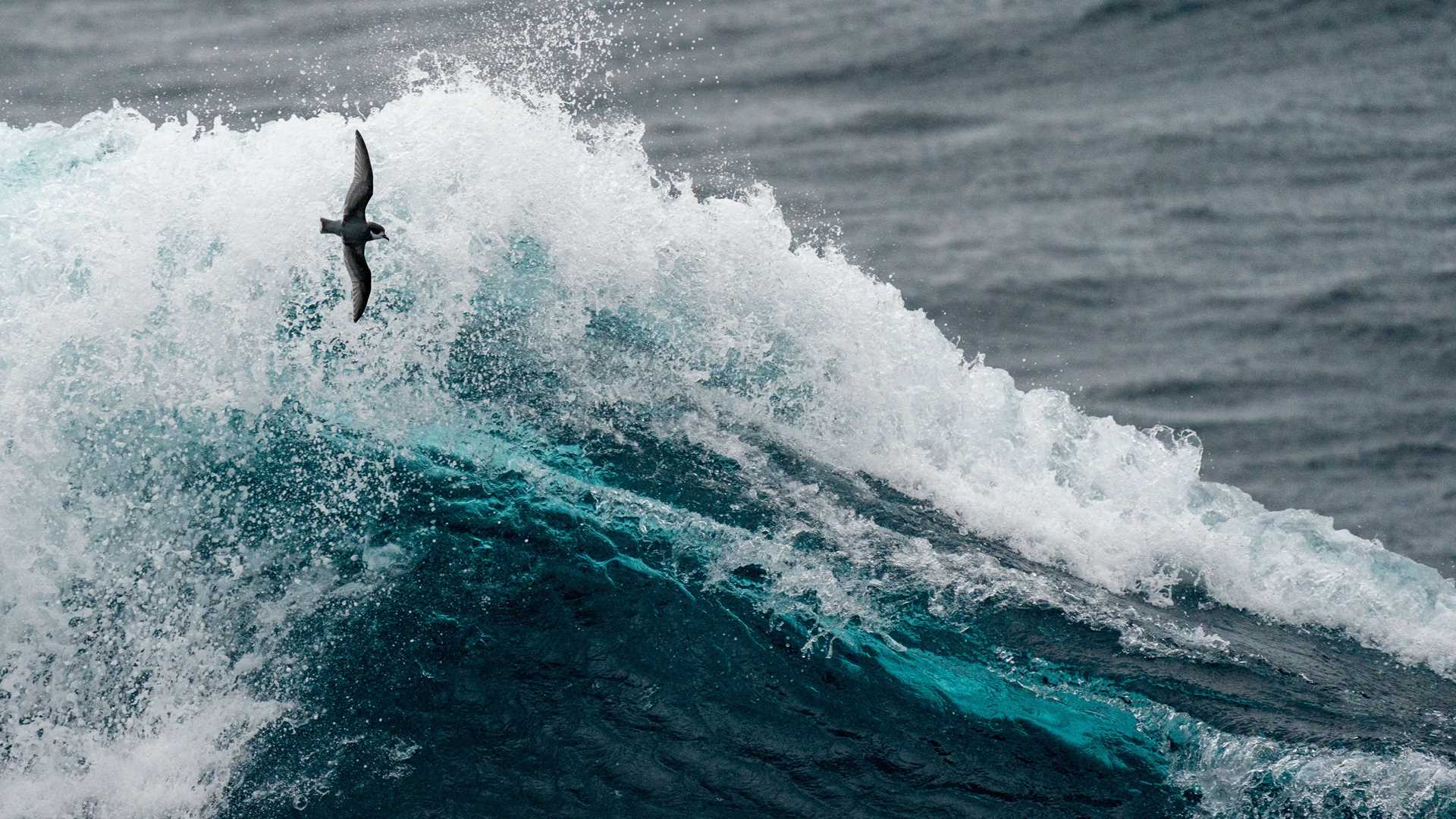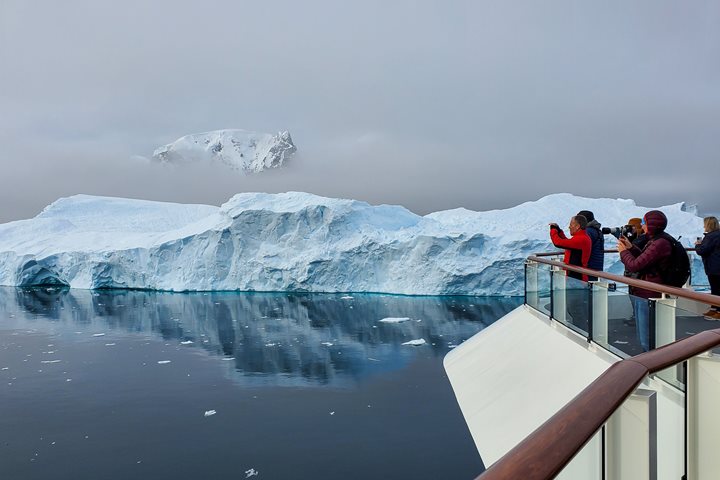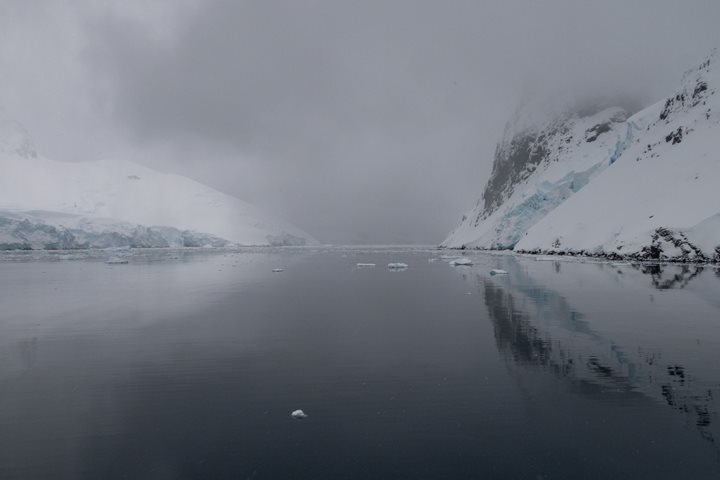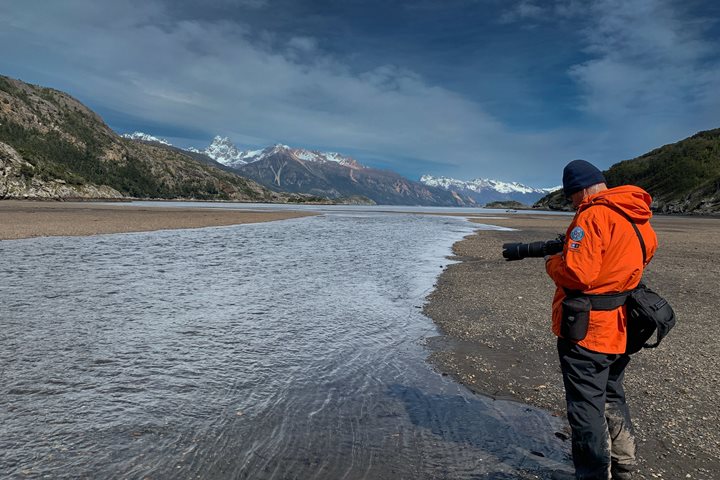The Drake Passage is always a gamble. It can be calm, it can be rough, or it can be both (after all, it’s more than 500 nautical miles long). This time it was a 7 out of 10. National Geographic Explorer sailed through the high waves wonderfully, but the high winds changing waves shook the ship from time to time (that’s why it is always wise to secure your cabin before entering the Drake).
During the day we enjoyed presentations, and once in Ushuaia we had the Captain’s Farewell Cocktail Party. Here Captain Peik Aalto shared a very nice speech with all of us, including his own highlights from the expedition.
Drake crossings are the perfect opportunity for seabird watching (if your stomach can handle it). Prions, cape petrels, fulmars, blue petrels, storm petrels and albatrosses (black-browed, light-mantled, royal, wandering, etc.), shearwaters, among others, were all spotted during our crossing. Sometimes they were curious and came toward the ship, while at other times it was mere coincidence in flight. The sea is full of prions, and from time to time we see some from the ship.
A trip to Antarctica is nothing without its Drake passage. A time to enjoy the wild nature of the ocean, and think about how sailors from previous ages had risked their lives in these hazardous waters. It is part of the expedition, part of the adventure.







